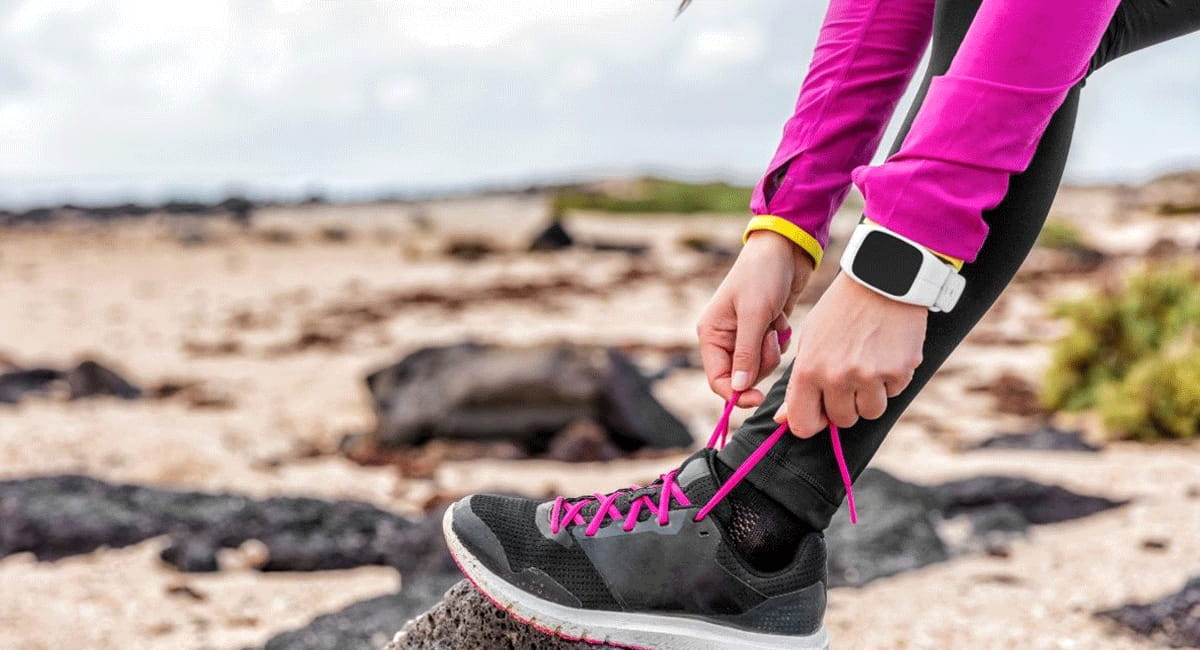Nowadays, there are plenty of ways to incorporate a sweat session into your days. Whether it’s long runs or the treadmill, lifting, or gym workouts, you need the right shoe. However, with so many different types of shoes on the market, it can be challenging to know which type is suitable for your needs. This is especially true when you’re shopping for training vs. running shoes since the difference between these two types of shoes might not be apparent at first.
We created this article to help you learn about the differences between training and running shoes, so you can easily decide which type of shoe is the ideal match for you.
What Are Training Shoes?
Training shoes are shoes that have been created to provide comfort while you’re doing any type of physical activity. Training shoes are manufactured to help with moving in multiple directions and side-to-side movements. They are suitable for jumping, braking, stopping, and cutting. In order to provide support and comfort to the feet, the soles of the shoes are made flatter.
These shoes are used for many different sports, such as:
- Walking – Training shoes are a good fit for people who like to have morning or evening walks daily.
- Indoor workouts – Indoor workout practices, such as jumping jacks and skipping, can be performed with training shoes.
- Weight lifting – Proper training shoes will provide a stable ankle as well as stiffness of the whole body, which is especially useful if a person is lifting heavy loads.
Moreover, training shoes can be used in circuit training, interval training, fitness boot camps and gym classes, plyometrics and agility training, and strength training. If your workouts are dynamic and varied, training shoes would be a much better choice than running shoes.
The key features of training shoes include:
- Heavier weight
- More traction
- Wider sole
- Flatter sole
- Additional side support
What Are Running Shoes?
The answer to this question is more obvious than the previous one – the purpose of running shoes is to use them for running. But, what do running shoes do that help you with running? Running shoes protect your feet while you’re pushing them against the pavement over and over again. Running shoes aid in forward movement, unlike training shoes that help with side-to-side movement.
Moreover, running shoes also provide more support and cushioning, resulting in a higher heel drop. With long-distance runs, you need ample shock absorption, and these shoes offer the required comfort.
The key features of running shoes include:
- Lightweight design
- Less traction
- Bigger heel drop
- Additional cushioning
Difference Between Training Shoes and Running Shoes

Below we will cover a few key differences between these two types of shoes.
- Purpose – While training shoes are made to perform all types of physical activity, running shoes are made to increase and enhance an individual’s running performance.
- Heel drop – Depending on how flat the shoe is, you can tell whether it’s a training or running shoe. The term “heel drop” refers to the distance from the height of the heel to the height of the toe. Running shoes have a higher heel drop, and they also come with additional cushioning and support.
- Type of movement – Like we previously mentioned, training shoes are meant for multi-directional and side-to-side movement, while running shoes are meant for heel-to-toe movement. With training shoes, there is more sole flexibility which allows a wide range of movement.
- Weight – Typically, the weight of training shoes is extremely light, even though running shoes don’t weigh very much.
How to Decide Between Running and Training Shoes
Some people might not have difficulty deciding between running and training shoes. People who like to go to the gym will find training shoes to be their first choice, while runners will find running shoes more appropriate. However, what happens to the people who go to the gym and like to run? Some of the questions you may ask yourself to help you with this decision include the following:
- Am I looking for a lot of padding and cushioning underfoot?
- Is the primary form of my exercise running?
- Do I run more than 5K at a time?
- Do I run more than three times a week?
If you’ve answered all of the questions above with a yes, running shoes are probably a better option for you. However, if you’ve answered these questions with no, training shoes are the right choice.
Risk of Wearing the Wrong Shoes
Wearing the wrong type of shoes can cause a range of issues. These issues include the following:
- Injuries – Training and running shoes are created to support your body through different types of movement. As a result, wearing the wrong shoes can increase your risk for knee injuries, ankle sprains, stress fractures, and so on.
- Lowered performance – The wrong type of shoes will hinder your physical performance. While you’re giving all of your effort to get the best performance, the last thing you need is for your shoes to hold you back. For example, you might experience a harder time upping mileage or getting faster if you don’t have the support and cushioning that running shoes provide.
- Pain or discomfort – Wearing the wrong type of shoes can be the reason for soreness, aches and pains, and blisters. You need to look for shoes that you will hardly notice while you’re working out.
Final Thoughts
Understanding the difference between training shoes and running shoes is important. Both training and running shoes are created with a certain type of activity in mind. Even though you can use running shoes for training and vice versa, this can lead to an increased risk of injury, pain, and discomfort, so it’s best to pick the type of shoes that best aligns with the activities you practice.






